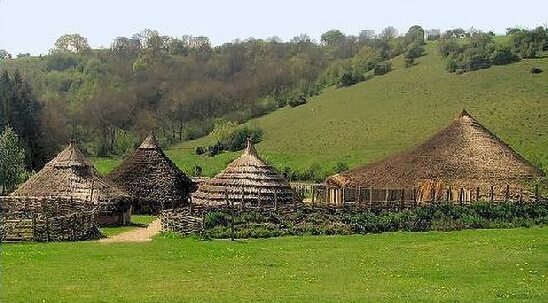The Celtic Kingdoms: Warriors, Druids, and Ancient European Heritage

In the tapestry of ancient European history, the Celtic kingdoms stand as a vibrant thread, weaving tales of warriors, mystics, and a rich cultural heritage. From the misty landscapes of Ireland to the rugged terrains of Gaul, the Celts left an indelible mark on the ancient world. Join us on a journey through the misty corridors of time as we explore the enigmatic Celtic kingdoms, where warriors clashed, druids communed with the spirits, and a unique heritage unfolded.
Introduction: A Glimpse into Celtic Mystique
In the shadowed realms of ancient Europe, a diverse group of tribes emerged, collectively known as the Celts. The Celtic world was not a monolith but a mosaic of distinct cultures, languages, and traditions. From the 8th century BCE to the Roman conquest, the Celts thrived across vast territories, leaving behind a legacy that resonates through the annals of history.
The Celtic Warriors: Masters of the Battlefield

The Celts, renowned for their prowess in battle, carved their place in history as formidable warriors. Clad in distinctive clothing adorned with intricate patterns, their bodies painted with woad, Celtic warriors struck fear into the hearts of their adversaries. The quintessential Celtic weapon was the longsword, a symbol of both status and martial skill.
The Celts’ martial prowess extended beyond the physical to a spiritual realm. War for them was not just a clash of swords but a dance with the gods. The battle frenzy known as “ferocity” transformed Celtic warriors into fearsome adversaries, charging into battle with an otherworldly fervor.
Druids and the Spiritual Tapestry: Keepers of Wisdom
At the heart of Celtic society were the druids, revered as the keepers of ancient wisdom, mediators between the mortal and divine. Cloaked in mystery, druids were not merely priests but the repository of Celtic lore, traditions, and the guardians of an oral history that spanned generations.
Druids were the spiritual guides, presiding over sacred rituals, interpreting the cosmic dance of the stars, and communing with nature. Their knowledge extended to herbalism, healing, and divination, making them indispensable figures in Celtic society. The sacred groves were their classrooms, and the knowledge passed down from druid to apprentice held the key to understanding the mysteries of life and death.
Celtic Artistry: Beyond the Battlefield
While the Celts were renowned for their martial prowess, their artistic expressions reflected a profound connection to nature and the spiritual realm. Celtic art, characterized by intricate knotwork, spirals, and zoomorphic motifs, adorned not only weaponry but also jewelry, clothing, and everyday objects.
Metalwork was a particular forte of the Celts, with masterpieces like the Gundestrup Cauldron showcasing their craftsmanship. The intertwining patterns reflected the interconnectedness of life, a symbolic representation of the cyclical nature of existence.
The Celtic Pantheon: Deities and Divine Realms

Celtic mythology, like its art, wove a complex tapestry of deities and legends. The pantheon was vast, with gods and goddesses governing various aspects of life. Among them, Cernunnos, the horned god of the forest and fertility, held a special place. The goddess Morrigan, associated with war and fate, embodied the duality of life and death.
The Celts believed in an afterlife, and the Otherworld was a realm of eternal youth and abundance. The veil between the mortal realm and the Otherworld was thin, allowing for interactions between the living and the spirits.
Celtic Decline: The Ebb of a Cultural Tide
The ebb of the Celtic cultural tide came with the Roman conquests and later the spread of Christianity. While the Celts resisted Roman incursions fiercely, their territories gradually succumbed. The rise of monastic centers, often built on ancient druidic sites, marked the Christianization of Celtic lands.
As the old ways faded, the legacy of the Celts endured in the form of myth, art, and a cultural richness that continued to influence the unfolding narrative of European history.
Legacy and Rediscovery: Reviving Celtic Heritage
The legacy of the Celts echoes in the melodies of Irish folk music, the intricate designs of Celtic knots, and the enduring fascination with tales of Arthurian legends. In the modern era, a resurgence of interest in Celtic heritage has led to a rediscovery of ancient traditions, language revitalization efforts, and a celebration of the enduring spirit of the Celts.
Echoes of a Forgotten Era
As we navigate the realms of Celtic history, we find ourselves entangled in the echoes of a forgotten era—a time when warriors roamed, druids communed, and the intricate patterns of Celtic art adorned a vibrant tapestry of life. The Celts, with their rich cultural heritage, invite us to delve into the mysteries of their world, sparking our imagination and curiosity. In the twilight of ancient Europe, the Celts left an indelible mark, and their legacy, like the intricate knotwork of their art, continues to weave its magic through the fabric of time.



It is believed that the Celts were a collection of tribes which originated in central Europe.
It is believed that the Celts were a collection of tribes which originated in central Europe.
Bookmarked, so I can continuously check on new posts! If you need some details about Fraud Schemes, you might want to take a look at Keep on posting!